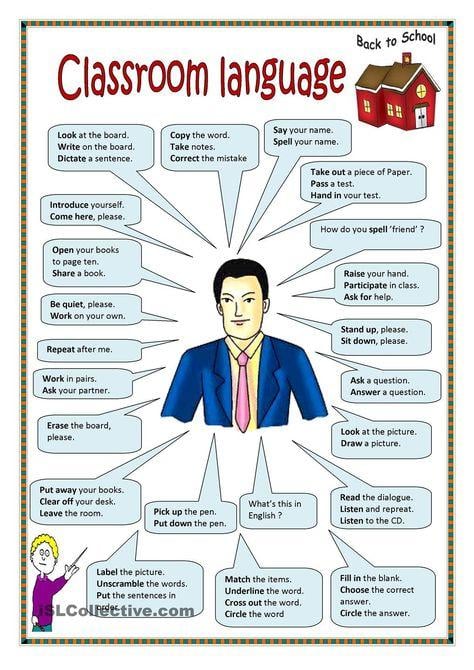Teaching English as a foreign language requires a set of certain skills in order to conduct effective lessons and encourage learning in students. Through a TEFL course, you will learn all of these important skills and much more. The following are the most useful phrases for classroom language to be used by English teachers in a classroom full of English learners around the world. The phrases are concise and straight to the point to ensure a steady workflow and positive classroom environment.

What is classroom language?
Why can teaching classroom language be a challenge?
Integrating classroom language into a lesson can often pose great difficulties for teachers due to the fact that many second language teachers learned the language themselves after childhood, thus were not exposed to authentic classroom language. If that is the case, the teacher should make a particular effort to seek out the correct language in order to create the most authentic experience possible for the students. On the other hand, foreign language students often encounter difficulties when the phrases in the target language do not make sense in their native language; students must learn to understand that different languages work in different ways.
How can classroom language be taught?
When teaching classroom language, there are several strategies a teacher can use to facilitate the learning:
- Teach the students the classroom language in a scaffolded way. Start with a short command, perhaps just one word such as “Open”. After a whiel, the teacher can progress to a longer command, such as “Open the book" and eventually students can learn alternate phrases that mean the same think, for example “Turn to page 15”.
- Make sure it's clear to the students what this language is for. Include them in the learning process; they should know that the more they use the language, the more they will develop and that these expressions are meant to help use the language in the most authentic way possible.
- Once you introduce the classroom language, use it! Employ the expressions as much as possible so the students become used to them and eventually are able to use them by themselves.
- Use prompts such as visuals or language ladders to help students learn and remember the classroom language.
What are some examples of classroom language?
Here are some examples of classroom language:
- Look at the board.
- Open your books.
- Repeat after me.
- Raise your hand.
- Form a line at the door.
Check out the image above for more classroom language expressions.
Are you interested in teaching English as a foreign language?
Get your TEFL certification with ITTT.
Register now & get certified to teach english abroad!


